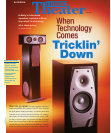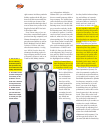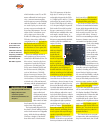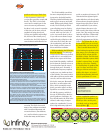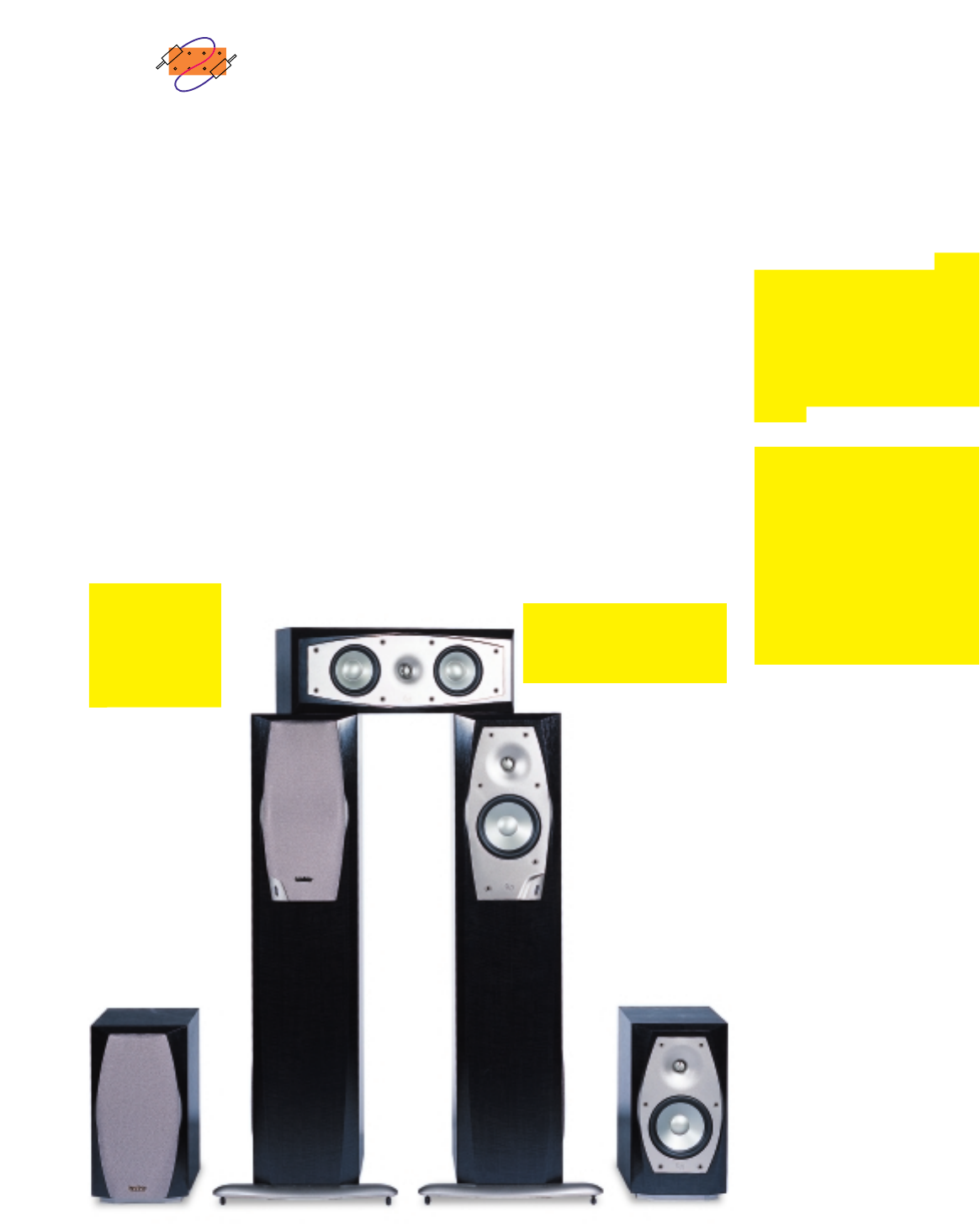
very independent within the
Harman fold—you could think of
them as a small company within a
large company. The trickle-down
comes from the top of the Infinity
line, not elsewhere. Outside the
listening room, I root for the little
guy as much as anybody. Inside
the listening room, when I sit down
to evaluate a speaker, I couldn’t
care less where it comes from, who
makes it, what color it is, or just
about anything else. The only thing
I care about is what it sounds like.
These trickle-down technolo-
gies can be summed up with, well,
several letters—C.M.M.D. and
R.A.B.O.S. Since you all read my
work religiously (ha!), I won’t go
into quite the detail on each that
I did in the Prelude review, but
the highlights bear retelling.
C.M.M.D. (Ceramic Metal
Matrix Diaphragm) drivers are
the heart of all Infinity speak-
ers, regardless of their cost.
As the name suggests,
this is a hybrid driver
construction that
uses an aluminum
core encased in an
outer layer of the
ceramic material alu-
mina, utilizing the
beneficial properties
of each while also
accounting for each
material’s shortcom-
ings. Metals are
dense and strong,
right context. And these particular
Infinity speakers fit the bill, given
that one of their most notable fea-
tures is their use of some of the
same top-shelf technologies that I
went on about in my review of the
flagship Prelude MTS line back
in November 2000.
Now, I know some of you out
there have a mental block against
products from big companies, and
Harman International—the com-
pany that owns Infinity (as well as
Revel, Madrigal, Proceed, Mark
Levinson, Lexicon, and some
other first-rate names)—is a big
one. Still, it’s hard to deny the
advantages that being a part of a
large company provides in terms
of research, resources, and so on.
Truth be told, Infinity remains
but they lack the inherent damp-
ing and stiffness of ceramics.
Ceramics provide the damping
and extra stiffness, but they’re
brittle and can’t stand up to
much abuse on their own. Put
the two together, and you’ve got
a full driver package that sounds
as good as it measures. You may
remember that the Preludes were
remarkable in both respects, and
these Interludes are impressive,
as well. Needless to say, these
aren’t cheap drivers to produce.
Drivers, in general, are the most
expensive part of any speaker:
The more advanced they are, the
more they cost. While we might
expect this type of quality in the
more-expensive Preludes, it’s a
major bonus for products in the
Interludes’ price range, many of
which still use polymers and
other cheaper driver materials.
The R.A.B.O.S. (Room Adaptive
Bass Optimization System) con-
sists of a parametric equalizer for
the subwoofer section that allows
you to make level, frequency, and
bandwidth adjustments to optimize
low-frequency output for your lis-
tening environment. As we all
know, your room is the biggest
determining factor of a speaker’s
performance, and its effect on the
lower frequencies is the most pro-
found. Three dials on the back
plate of each speaker (correspond-
ing to the three adjustments I
mentioned) allow you to make cor-
rections in a couple of different
ways. One option is to make pri-
mary changes by adjusting level
and frequency by ear (you’d need
a keen ear to make bandwidth
adjustments in this manner). You
can also get the R.A.B.O.S. kit
(an extra $60 with the Interludes),
A. The IL10 is a
direct-radiating
bookshelf speaker
that performs very
well with music and
solidly with movies.
B. The IL25c center
channel managed to
avoid many of the
problems associ-
ated with a horizon-
tal alignment and
two active drivers.
C. Thanks to the
R.A.B.O.S. system,
you can tailor the
IL50’s bass output
to match your par-
ticular tastes.



